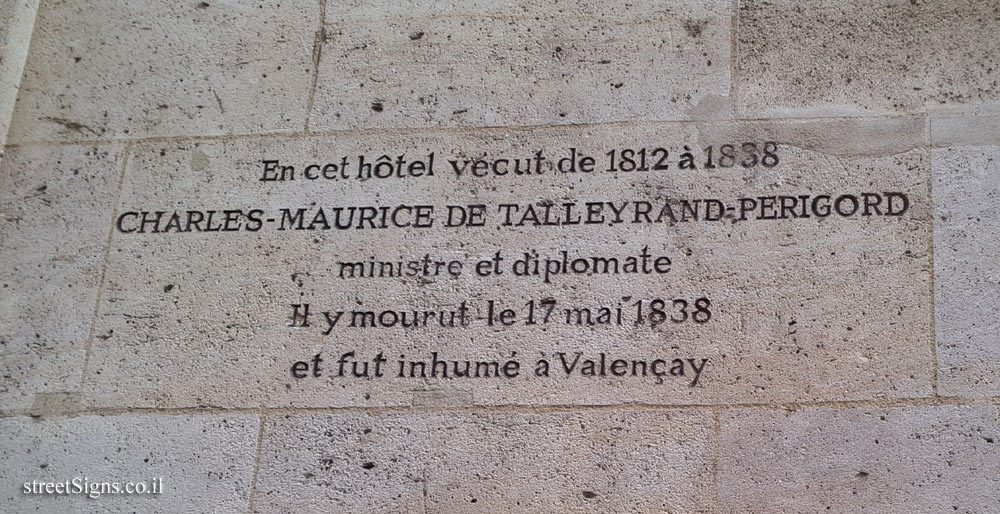One of the series of signs describing historical places in Paris. The signs were placed starting in 1992 and are also called sucettes Starck (Starck’s Lollipops) after Philippe Starck who designed them.
The plaque describes the house where noblemen and other dignitaries lived, and it was named because Charles-Maurice de Talleyrand, French Prime Minister and French Ambassador to Great Britain lived there
The house was photographed on the same day
 Click for a larger image
Click for a larger image The illustration in the center of the sign is shown here at magnification
 Click for a larger image
Click for a larger image On the wall of the house is the plaque indicating the fact that Charles-Maurice de Talleyrand lived there
 Click for sign's details
Click for sign's details The house is designated as a French historical heritage site
Translation of the text on the sign:
[An illustration of a ship, symbolizing the symbol of Paris]
History of Paris Talleyrand-Périgord house Built in 1767 by Chalgrin to designs by Gabriel, this hotel was first owned by Louis Phélippeaux, Duke of La Vrillière, Count of Saint-Florentin, minister of Louis XV. After his death, in 1777, it belonged to the Duke of Fitz-James, descendant of the King of England James II, then to the Princess of Salm-Salm before becoming for one year, in 1792, the embassy of the Republic of Venice. Transformed into a saltpeter factory during the Revolution, the building was acquired by the Marquis d’Hervas, who sold it in 1812 to Talleyrand.
[illustration of the house]
At the fall of the Empire, in April 1814, the diplomat hosted Tsar Alexander I there. In 1838, the hotel became the possession of the Rothschild family, who sold it in 1950 to the United States of America.

 Click for a larger image
Click for a larger image  Click for a larger image
Click for a larger image  Click for sign's details
Click for sign's details  Click for all signs belonging to The History of Paris (Starck's Lollipops)
Click for all signs belonging to The History of Paris (Starck's Lollipops)
 178 Meter |
178 Meter |  427 Meter |
427 Meter |  494 Meter |
494 Meter |  524 Meter |
524 Meter |  524 Meter
524 Meter